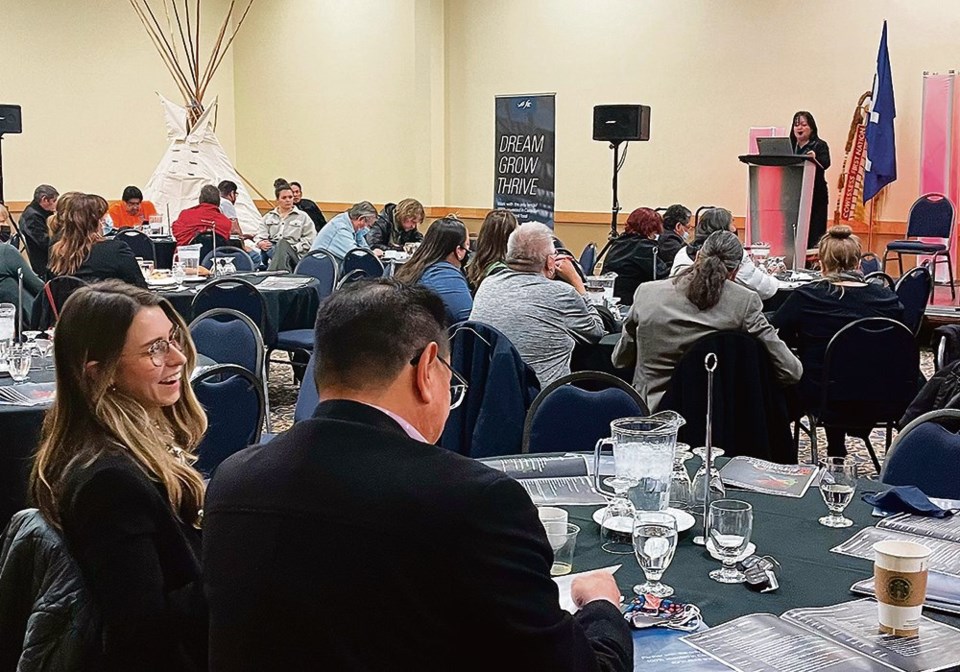Kallie Wood, senior Indigenous adviser with the Saskatchewan Ministry of Agriculture, told those at the conference, which began Nov. 23, what the Ministry was doing for reconciliation.
“We’re at a significant time in place in our country, a time where we’re working towards Reconciliation and acknowledging our shared history and truths, and understanding that we are all treaty people, that we are all connected, is so important in moving this country forward,” said Wood, who is from the Carry the Kettle Band First Nation.
Saskatchewan has the largest Indigenous agriculture population in Canada. According to Wood, between three and four million acres of First Nation reserve land, the majority of it leased, is farmed.
“The Ministry of Agriculture recognizes that it is extremely important to recognize and understand the traditional, cultural and spiritual connections that Indigenous peoples have with agriculture, the foods that we eat, or use for traditional medicine and more broadly, the land they live on.”
In October, the Ministry hosted its first Indigenous agriculture summit, where the conversation of Indigenous agriculture began.
“We talked about agricultural research and demonstration opportunities. We do have a program … site where we have people come in to learn about what agriculture is, running equipment, what crops will work on wetlands. And so that is something that they’re looking at doing in 2022.”
Wood said many new things have been implemented at the ministry of agriculture. One of those things is a basis team, which is to get provincial specialists in agriculture connected with specific Indigenous communities.
In discussions with Indigenous communities the ministry learned of barriers to the agriculture industry for Indigenous peoples.
“One of the barriers that we heard from First Nation communities was ‘we absolutely dislike going on and being sent a link to go on the internet,’ ” Wood said.
“So what we did is we created this program binder, so the basis team will be getting a hold of our First Nation communities and mentee regions.”
From there the group will look at the land, the community, and the opportunities in agriculture to best help the communities.
To implement these changes and to make agriculture more accessible to Indigenous peoples, Wood and the Ministry of Agriculture plan to reach out to different indigenous communities in 2022, and asked them three questions: what are your community’s needs regarding agriculture? What are the agriculture and agribusiness opportunities that you feel agriculture programming should support? What in your communities do you think we can come assist with to move your agriculture agenda forward?
“And then we’ll have that conversation, we’re going to do that sharing circle … and then come back in November to say, ‘OK, here’s kind of what we heard what we’ve come back with this is some of the partners that they’re doing across Canada,’” Wood said.
“I’m more interested in what can we do in Saskatchewan, and what can we do for First Nations people in Saskatchewan or Metis regions.”




